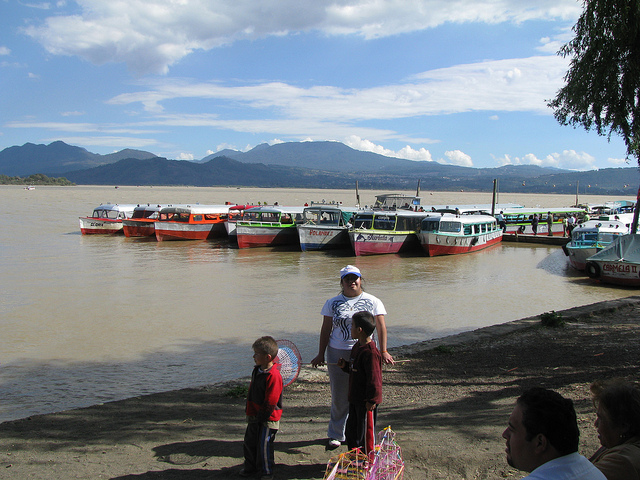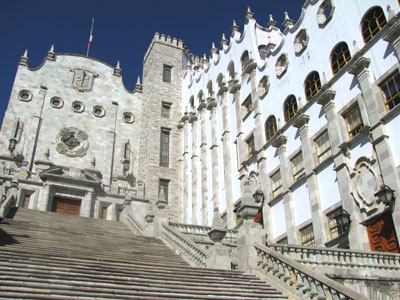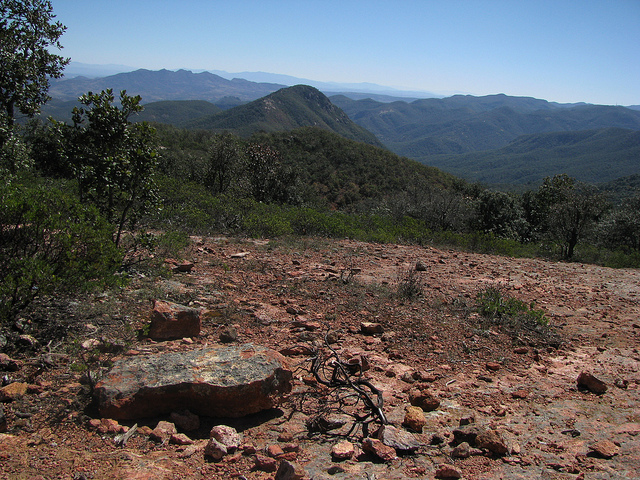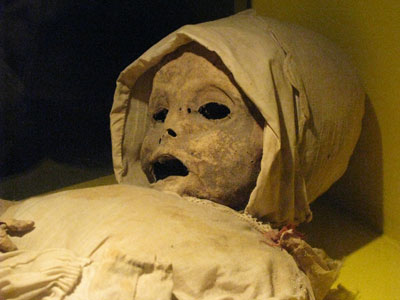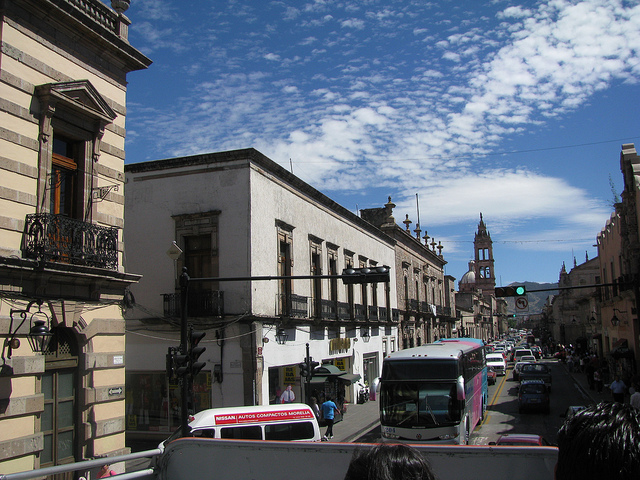It was getting chilly now as we were walking up the hill towards the “Basilica de Nuestra Señora de la Salud” (Our Lady of Health). From 1554 onwards, this church was built by Vasco de Quiroga over an ancient pre-Hispanic ceremonial site. Originally the Franciscan monks and the Purepecha tribe had an agreement that the Spanish conquerors were allowed to build Roman-Catholic churches while they would respect the natives’ ceremonial sites. Vasco de Quiroga broke with this tradition and insisted that there should only be one church and constructed the building right on top of a Purepecha ceremonial site.

The Cathedral of Pátzcuaro was supposed to be much bigger than this
The bishop also had very grand plans: he wanted to build a church with five naves, which would have been a huge undertaking. His grandiose plans never came to fruition: only one tower was ever finished. Inside the church is a corn-stalk paste statue of “Our Lady of Health” and the tomb of Bishop Vasco de Quiroga.

Interior of the Cathedral of Pátzcuaro
Outside the church is another market where locals are selling handicrafts, clothing and herbs. The façade of today’s basilica dates from the late 19th century and its flat roof is decorated to look like a vault. The large organ was built in Germany during the 1800s. From the church we started walking towards the former Dominican Monastery and steps away we stopped at the “Casa de los Once Patios” (House of the Eleven Courtyards), which was built in 1742 for an order of Dominican nuns.

The Casa de los Once Patios – only five courtyards are left
Today there are only five courtyards left and the building itself was restored and turned into a local artists’ center. It was now very late on a Sunday afternoon and most of the workshops were closed, but Rodrigo managed to find two that were open. A husband-and-wife team were still working away on their projects. The husband produces huge wooden plates and corn-stalk paste statues while his wife creates intricately patterned gold-leaf designs. I was awed by the amazingly symmetrical free-hand designs that the lady was producing without any prior sketches. Rodrigo added that she has the pattern only in her head and invents the details as she completes the project.

Intricate gold leaf art created in Pátzcuaro
The sun was now setting and it was getting rather cool. We started our return trip to Morelia but unfortunately we got caught in a traffic jam that added almost an hour to our originally short trip. When I got back to my hotel I enjoyed the hot shower and my comfortable room with my satellite television and my high-speed Internet connection. It allowed me to unwind after a long day of sightseeing and to get ready for my last full day in Mexico where I would have a chance to explore another interesting area near the city of Morelia: Lake Cuitzeo.

The Cathedral of Morelia, viewed from the rooftop of my hotel, the Hotel Catedral
